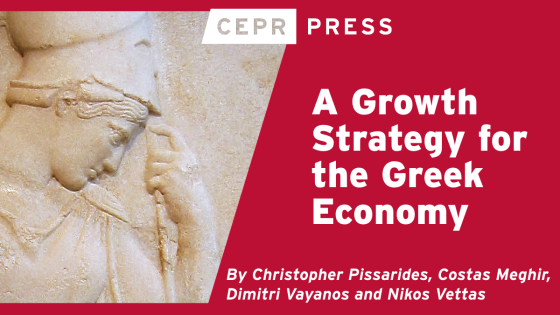DP10588 Sovereign Debt and Structural Reforms
Motivated the European debt crisis, we construct a tractable theory of sovereign debt and structural reforms under limited commitment. The government of a sovereign country which has fallen into a recession of an uncertain duration issues one-period debt and can renege on its obligations by suffering a stochastic default cost. When faced with a credible default threat, creditors can make a take-it-or-leave-it debt haircut offer to the sovereign. The risk of renegotiation is reflected in the price at which debt is sold. The sovereign government can also do structural policy reforms that speed up recovery from the recession. We characterize the competitive equilibrium and compare it with the constrained efficient allocation. The equilibrium features increasing debt, falling consumption, and a non-monotone reform effort during the recession. In contrast, the constrained optimum yields step-wise increasing consumption and step-wise decreasing reform effort. Markets for state-contingent debt alone do not restore efficiency. The constrained optimum can be implemented by a flexible assistance program enforced by an international institution that monitors the reform effort. The terms of the program are improved every time the country poses a credible threat to leave the program unilaterally without repaying the outstanding loans.


